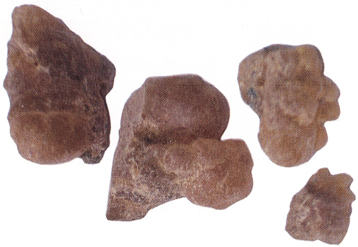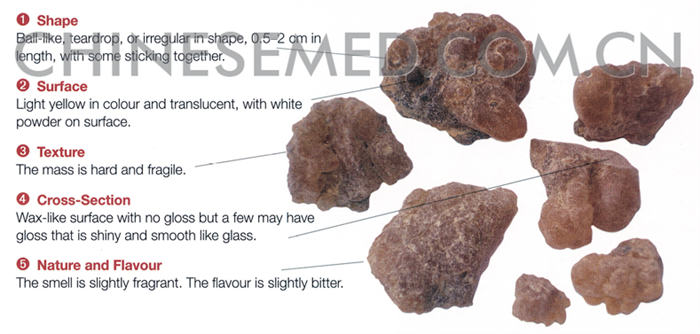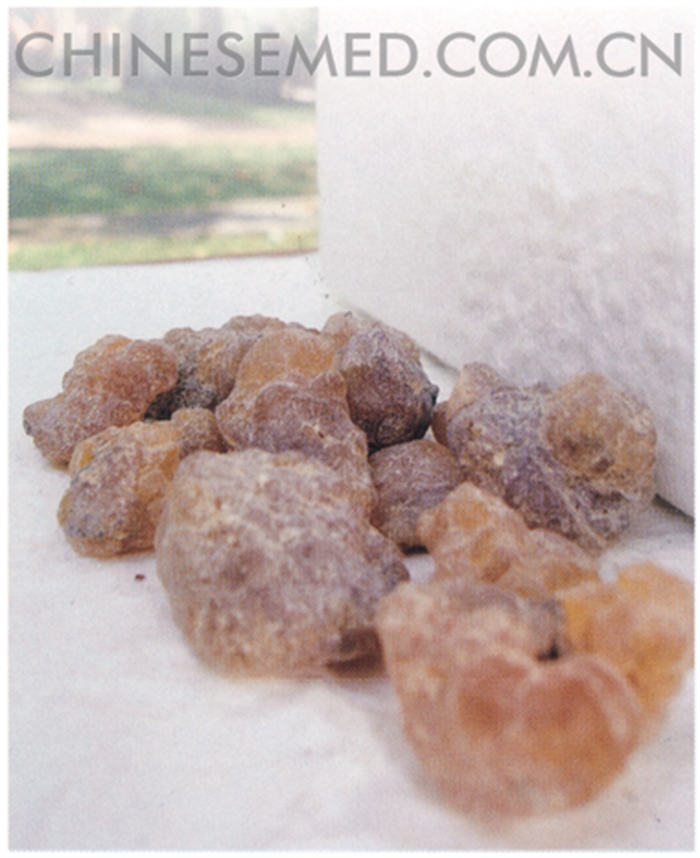

Source Frankincense is the resin from the bark of Boswellia carterli Birdw and other species in the same genus, (Fam. Burseraceae.)
Producing Areas Produced mainly in Somalia, India, Turkey, Egypt, Libya and Tunisia.
Properties Spicy, Bitter and Warm
Channels Liver, Spleen, Heart
ACTION
- Promotes circulation of blood and qi; relieves pain and relaxes the sinews
Commonly used with myrrh for conditions including amenorrhea, dysmenorrheal, stomach and epigastric pain, traumatic pain, carbuncles, sores, swellings, chest and abdominal pain. Cures wind-dampness, painful obstruction, rigidity and spasms. - Reduces swelling and aids healing
It enhances the healing of skin lesions, ulcers, sores, carbuncles and traumatic injuries. Also used to relieve pain and redness, and reduces the swelling of gums, mouth and throat.
Usage and Dosage
Used as crude herb to promote blood flow and subside swelling. When stir-baked, it can be used to dispel blood stasis and alleviate pain. 2-5 g is used in decoction for oral use; 4-10 g of stir-baked is used.
Note
Contraindicated for pregnant women and those suffering from blood deficiency without stasis.
Used with caution as its bitter flavour may cause nausea. Not recommended for those with a weak stomach.


Storage
As the herb tends to lose its fragrance and change colour, it may become soft and stick together. It ignites easily when exposed to high temperatures and should be kept in a sealed container and stored in a cool dry place.
Description of Quality Herb
Light yellow in colour; translucent pellets with no impurity, and has a strong fragrance.


